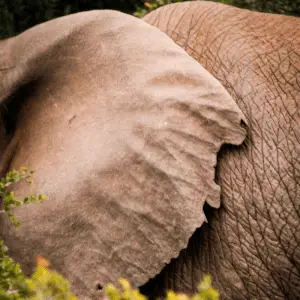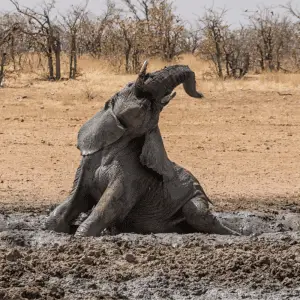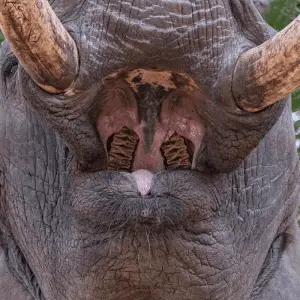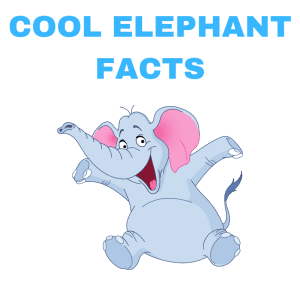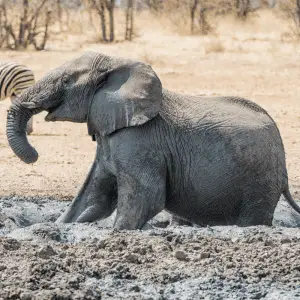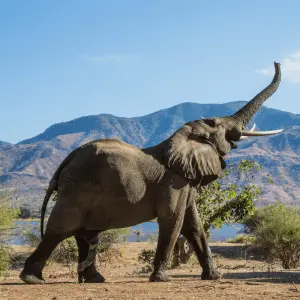An Elephant uses their trunks to suck up water and squirt it into their mouths.
Did you know that the trunk isn’t used just for drinking water?
Elephants Trunk Uses
- Assisting other herd members when in trouble
- Bathing
- Breathing
- Eating
- Fighting
- Foraging
- Grasping
- Greeting other animals
- Lifting objects
- Making sounds
- Smelling
How much can an elephant lift with its trunk?
An elephant can lift to 700 pounds with its trunk.
Amount Of Water Elephants Need
To maintain their health, elephants drink hundreds of litres of water daily. An adult elephant consumes up to 200 litres of water regularly.
It takes about 5 minutes for an elephant to consume its daily dose of water.
Generally, a fully-grown elephant can drink 2.5 gallons of water at a time.
The regular water intake of an adult elephant is about 200 litres per day. However, this amount can significantly change if the elephant is unwell.
Not A Straw
Contrary to popular belief, elephants cannot use their trunk just like a straw while drinking water; instead, they use their trunks as equipment or tool for sucking water from the water reservoir.
They use their trunks to put the water inside their mouth in a hose-pipe-like manner.
Clean Water
Elephants are incredibly cleanliness-loving creatures. They do not drink muddy water.
Elephants will use their trunk to clear the dirt off the water’s surface before they start drinking.
They will also use their tusks and often dig holes in the water resources to filter out the clean water before drinking.
Do baby elephants use their trucks for drinking water?
Even though adult elephants use their trunk for drinking water, baby elephants cannot drink water similarly. Like human babies, elephant babies also need to learn how to use their trunks for drinking.
Until they learn to drink using their trunks, baby elephants drink directly from the water source through their mouths.
If you observe elephant babies, you will notice that they often kneel on the ground to drink water.
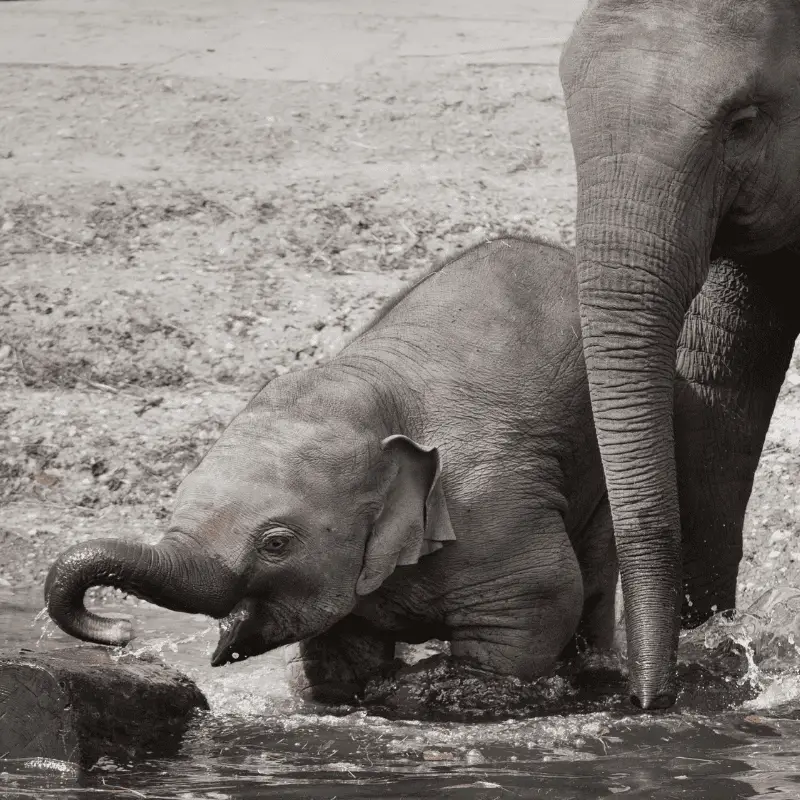
Strong Trunks
Elephant trunks are made of more than 100,000 tendons and muscles. All these tendons and muscles create acute strength that supports the weight of gallons of water.
The elephant trunk is a combination of their nose and upper lip. While drinking water, the elephants flare their nostrils while drinking water to generate more space inside them.
How much water can an elephant such up their trunk?
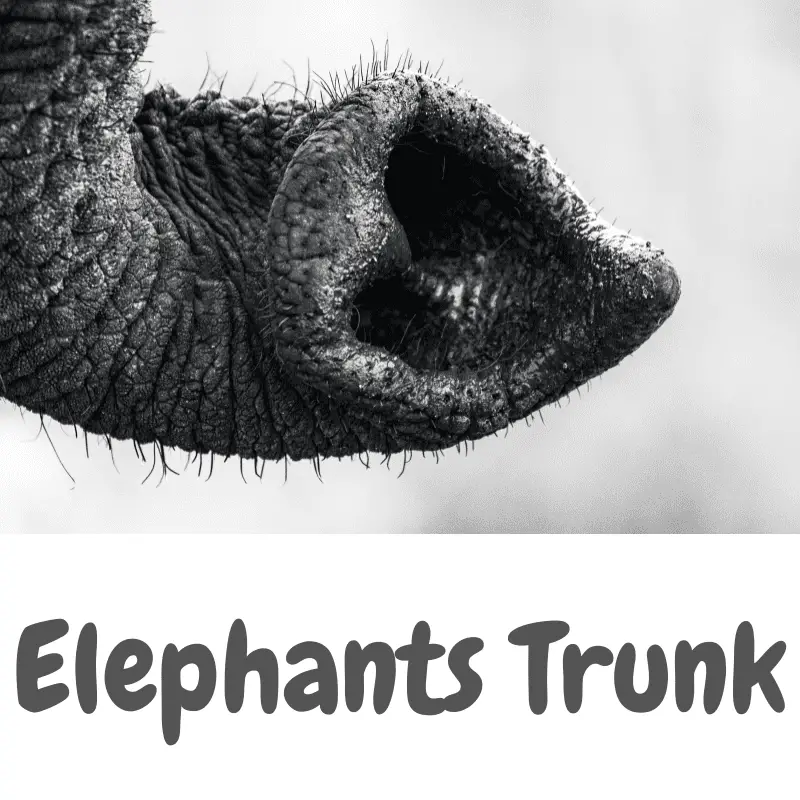
Elephants can suck up around nine litres of water at any time and at a speed of 3 litres per second.
This speed is about 30 times faster than human sneezing.
How do elephants find water during a drought?
Elephants are intelligent animals that can find water from multiple resources like ponds, lakes, and rivers. Elephants with tusks often dig holes in the ground to find drinking water for themselves. However, there are water shortages during the summer months. During this time, the elephants face an arid climate when the natural water resources dry out.
In this situation, the African elephants fulfil their water intake requirements from Baobab trees. These unique trees can store more than one thousand litres of water, perfect for the elephant to drink.
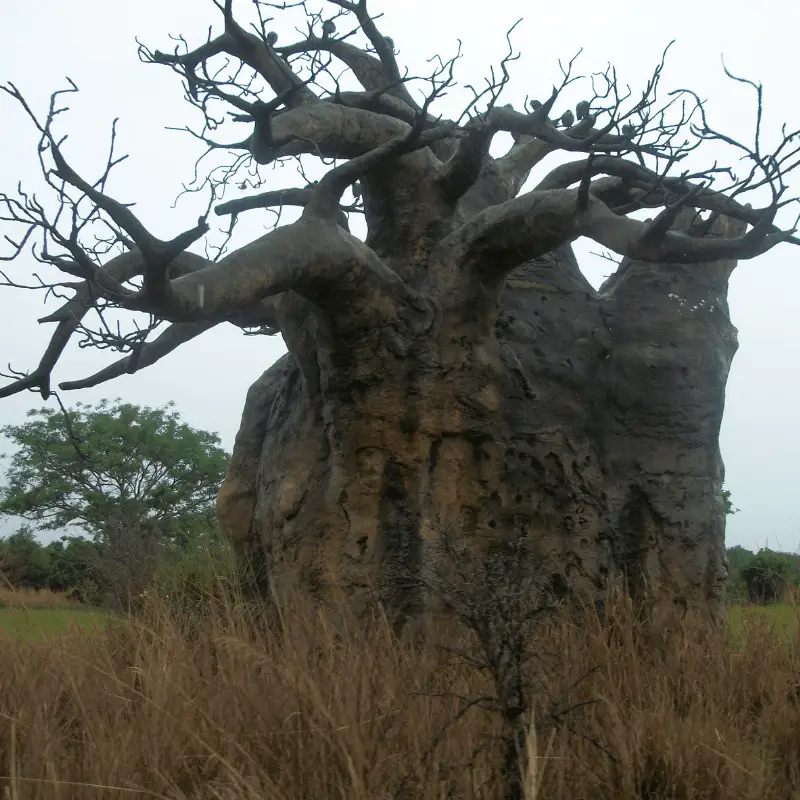
During the summer months, the elephants will tear and chew the flesh of the Baobab trees to get the water and good nutrients that this tree offers.
Recommended Read: What Do Elephants Eat and Drink? (Amount, Feeding Habits)
Amount of Water, The Elephants, Consume
An elephant drinks between 70-200 litres (15-50 gallons) of water daily, depending on the temperature. The hotter the weather, the more an elephant needs to drink. The baby elephants generally rely more on their mother’s milk. That is why they drink less water until they reach about ten years of age.
How long can an elephant last without water?
The elephants can stay healthy without consuming water for up to four days. After this time, dehydration will set in slowly, and the elephant will start to deteriorate.
This ability helps the elephants to travel large distances in search of water. Generally, elephants tend to stay near water resources, so they do not suffer from dehydration.
Elephants can sniff out water from more than five kilometres distance.
The elephants lose more than 10% of water weight during the summer months every day. That is why elephants stay near the water resources to avoid dehydration-related problems.


